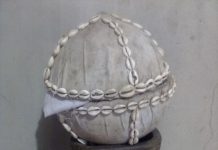During the time of the Prophet, not everyone was able to meet him physically. Many people heard the message from loved ones, or some random dude walking by. There was an instance an old woman was advising a young man against following the religion of Muhammad not knowing that she was talking to Muhammad himself.
So this tradition continued even after the Prophet passed away. In his absence, there were many instances where people needed legal ruling in both religious and social matters, these matters were settled by his closest companions since they remembered how issues like that were dealt with. As time passed by, the closest companions were dying off, while some of them dispersed to teach the Message of Islam.
I heard a story of how Imaam Ahmad Bin Hambal, one of the founders of the four main schools of jurisprudence walked from Madina to Egypt because he heard that someone or some people had sayings of the Prophet he had no access to. On reaching Egypt, he was broke and could not even afford accommodation, he set camp on a graveyard throughout his stay in Egypt just so he could get those Hadiths, compile them into books that we read today. And today, his efforts are being insulted by some people. May Allah reward his efforts.
With time, scholars started realizing that some people were fabricating lies and claiming that they were words of the Prophet. Some never even met those who met the Prophet, but claim they have. Scholars had to sit down and come up with rules and regulations to check the authenticity of Hadith, and this was how the Science Of Hadith or Uloom Al-Hadith was born.
The Science Of Hadith or Uloom Al-Hadith can be divided into two main parts, name:
1. Ilm Al-Hadith Diraaya, which focuses on the narrator and the chain of narrators he claims to have gotten the Hadith from
2. Ilm Al-Hadith Riwaya, which focuses on the content of the Hadith itself, or in other words, it focuses on the narration.
The biggest challenge as far as I am concerned is rooted in Ilm Al-Hadith Diraaya, and for anyone to be able to appreciate it, that person has to take a sneak peek to see what it entails.
TYPES OF HADITHS
I am going to use reference from one of the greatest books on Ilm Al-Hadith called Al-Manzumatul Bayquniya. It a small book written by Shaikh Taaha Bin Muhammad Bin Fatuh Al-Bayqunee. In the book, he listed about 30 types of Hadiths all coded in a poem he wrote, 34 lines of peom to be presice.
1. Al Sahih
2. Al Hassan
3. Ad Da’eef
4. Al Marfu’
5. Al Maqtu’
6. Al Musnad
7. Al Muttasil
8. Al Musalsil
9. Al ‘Azeez
10. Al Mash-hoor
12. Al Mu’an ‘an
13. Al Mubham
14. Al ‘Ala
15. Al Naazil
16. Al Mawqoof
17. Al Mursal
18. Al Gareeb
19. Al Munqatee’
20. Al Mu’dtal
21. Al Muddalas
22. Al Shazz
23. Al Maqloob
24. Al Fard
25. Al Mu’alal
26. Al Mud-tarib
27. Al Mudrajaat
28. Al Mudabbaj
29. Al Muttafiq
30. Al Muftareeq
31. Al Mu’taleef
32. Al Mukhtaleef
33. Al Munkar
34. Al Matrook
35. Al Mawdoo’
.
To be continued, In shaa Allah
By Hamid Abdulmalik Al-hassan






